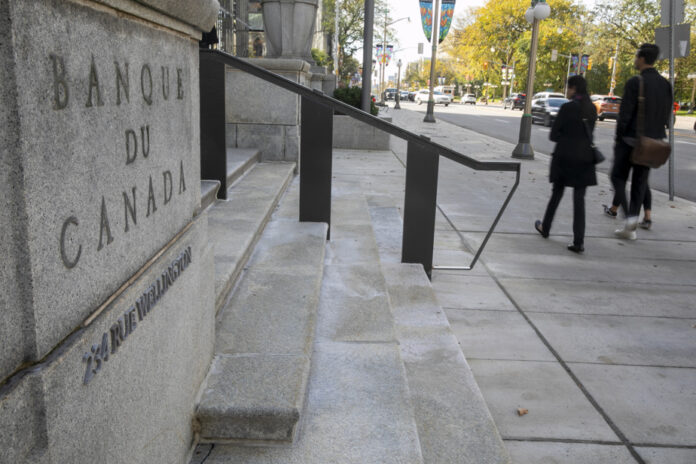The Bank of Canada is encountering resistance in its fight against inflation, its governor, Tiff Macklem, admitted on Wednesday. Among these headwinds is increased government spending, which, beyond a certain level, delays the return to the 2% target, he said.
“When the increase in government spending hovers around the 2% target, as was the case last year, it does not fuel inflation. But if it rises to 2.5%, like what is currently planned, if it comes true, it will not help,” the governor said during the press conference following the announcement of the key rate .
The Bank of Canada has no influence on the fiscal policies of governments, it simply takes them into consideration, clarified Tiff Macklem.
The central bank kept its benchmark rate at 5% on Wednesday, but warned that further hikes may be needed to bring inflation back to the 2% target. In the meantime, inflation will remain higher for longer than the bank predicted in July.
In addition to government spending increases, the central bank is most concerned about high wage growth and the ease with which companies continue to raise prices.
Inflationary risks are also increasing due to the armed conflict that has just broken out in Israel, which could increase the price of oil, the governor said.
“We left the key rate at the same level because monetary policy is slowing the economy and easing price pressures, and because we want to give it time to do its job,” he said. he said.
After 10 key rate hikes, the inflation rate is still almost twice as high as the Bank of Canada’s target. Even though the economy has slowed, price pressures are still strong and the central bank does not expect a return to the 2% target before 2025. And that’s not a certainty: energy prices and the persistence of high underlying inflation could slow progress, she warns.
Inflation is expected to remain high, around 3.5%, until mid-2024, before continuing its descent towards 2% in 2025, the bank now forecasts.
The Bank of Canada believes that it is far too early to consider lowering interest rates. “Now is not the time to talk about rate cuts,” Tiff Macklem said. We will need to see very clear signs that inflation is falling towards the 2% target before thinking about cutting rates, he said.
This is not the case currently. The inflation rate measured by the CPI has fallen to 3.8%, but the measures of core inflation that the Bank of Canada mainly monitors remain stationary between 3.5% and 4%.
In its Monetary Policy Report published at the same time as the key rate announcement, the central bank lowers its growth forecasts for the Canadian economy for 2023. Gross domestic product is not expected to exceed 1% until at the end of 2024.
There could be two or three negative quarters, but not what we could call a recession, explained Tiff Macklem. According to him, a recession is accompanied by a significant increase in unemployment, which is not the case currently. The unemployment rate, at 5.5%, is not far from its historic low, he noted.
The governor also did not comment on the likelihood of a soft landing for the Canadian economy, which would involve overcoming inflation without pushing the economy into a recession. “The path to a soft landing is still narrow and it’s getting narrower,” he said.
Even though the Bank of Canada clearly says that it will not hesitate to raise rates further if necessary, most economists believe that this is the end of rate hikes. “We do not anticipate additional increases,” commented Claire Fan, economist at the Royal Bank, who nevertheless believes that the key rate will remain at its current level for a long time.
“The downward revision of real GDP growth forecasts convinces us even more that the rate hikes are over,” also analyzes Randall Bartlett, senior director, Canadian economy, at Desjardins. He points out that the impact of the hikes is not yet being fully felt in the economy, because more than half of mortgage holders have not yet renegotiated their loans at the current higher rates.
Sébastien Lavoie, economist at the Laurentian Bank, predicted that the Bank of Canada could begin to reduce its key rate at the beginning of 2024. He now thinks that we will have to wait longer for a first reduction, rather at the end of 2024.















